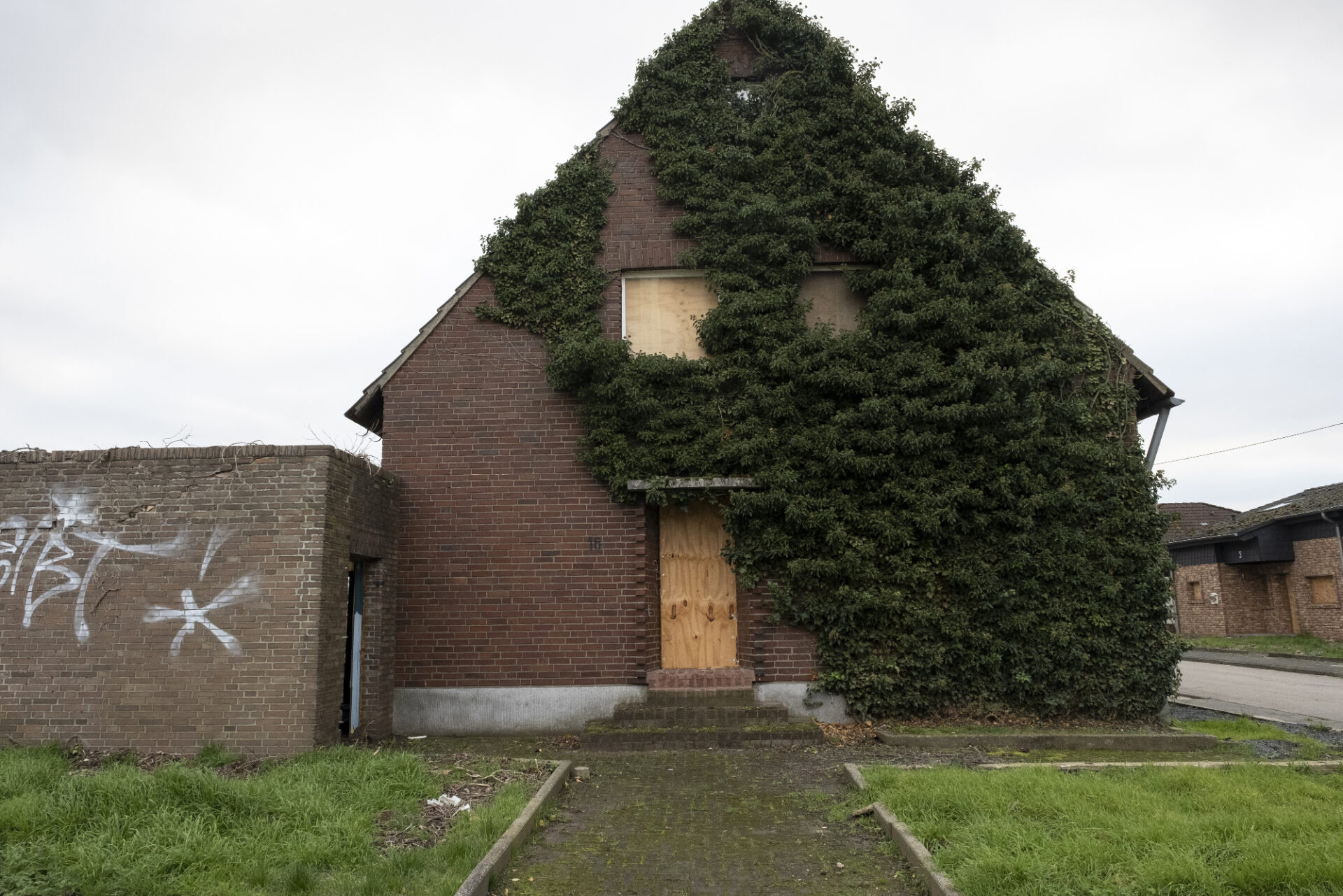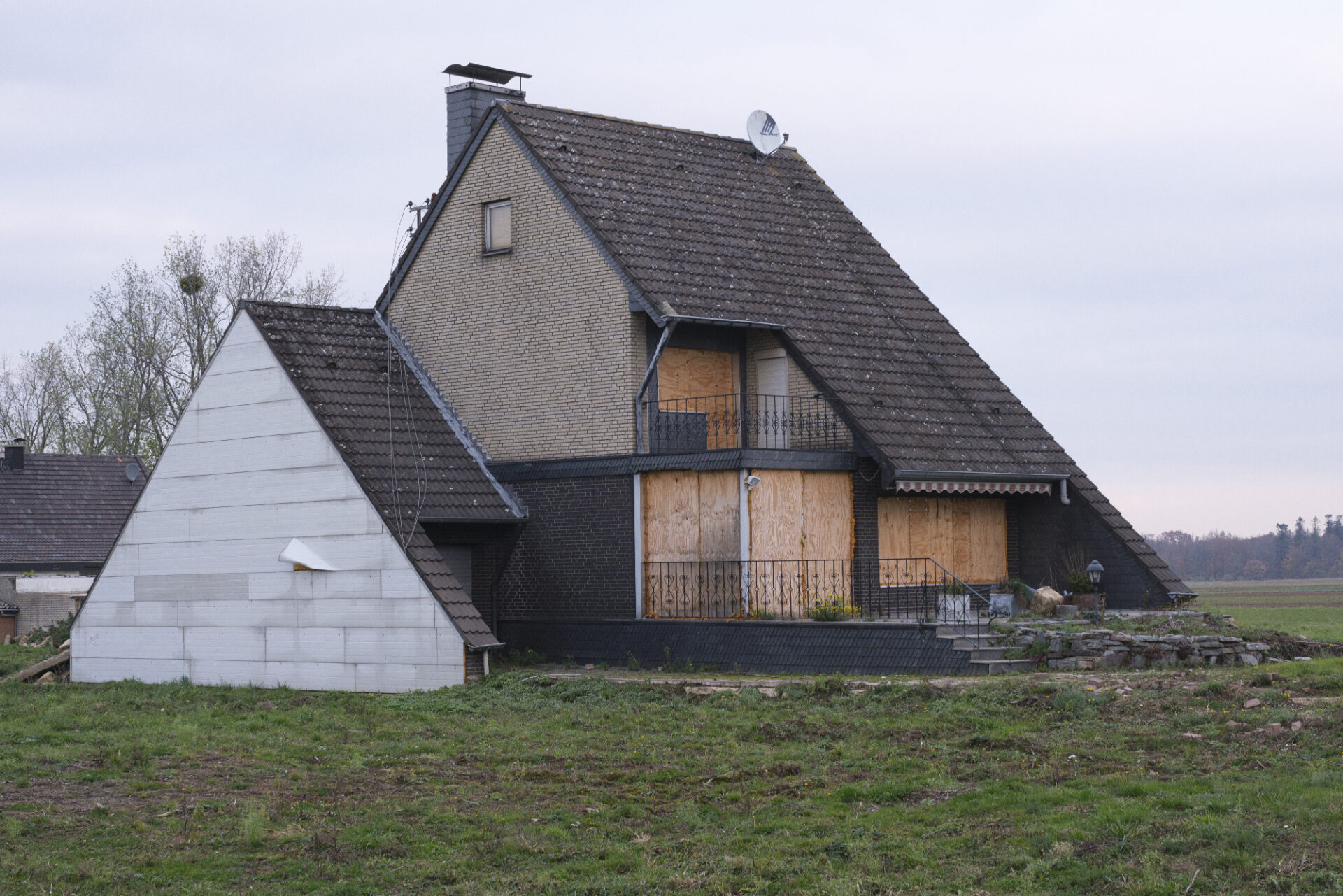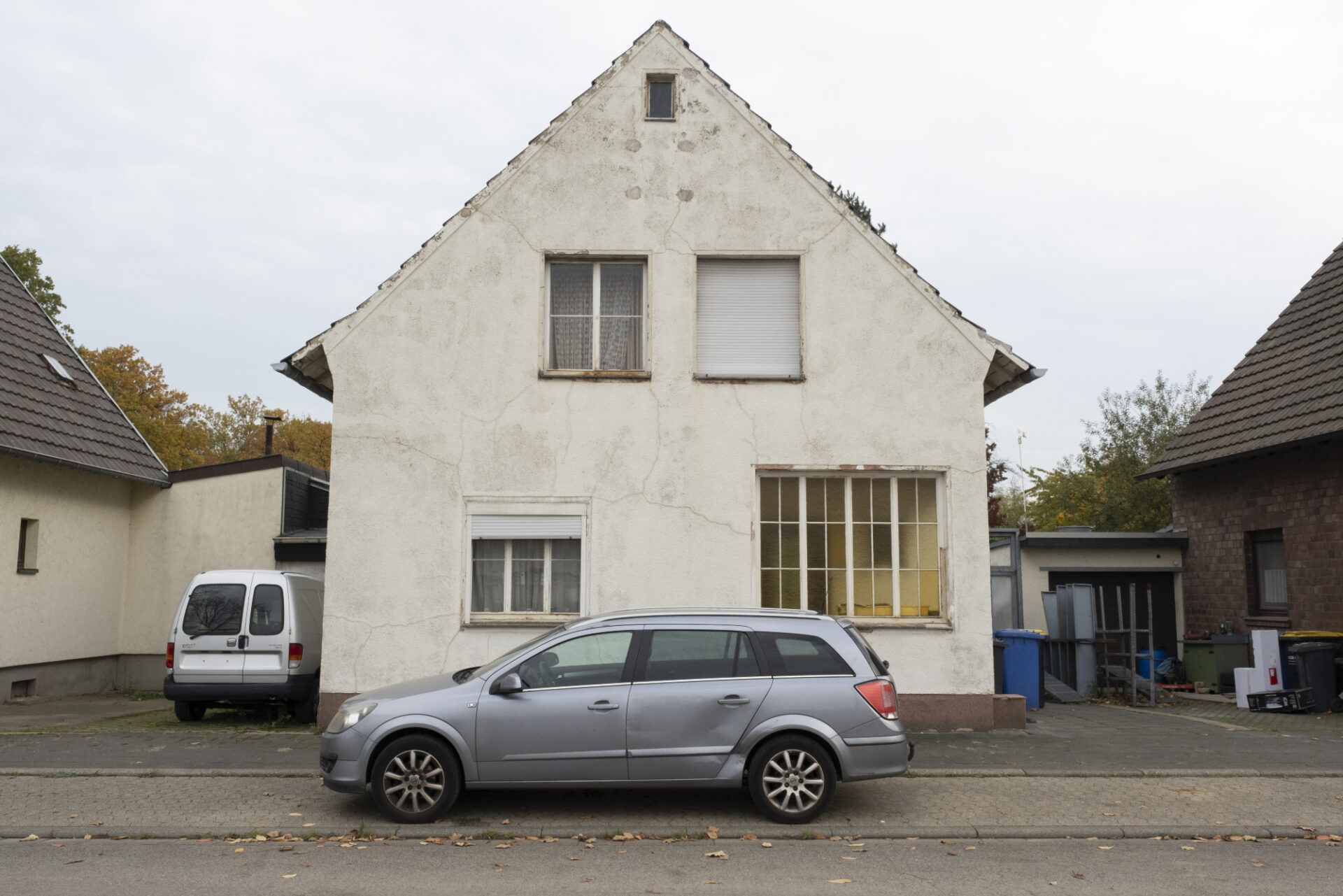Opencast coal mining has led to the destruction of hundreds of German villages over the last century. Germany has promised to phase out coal by 2038, but extraction continues, and the future of several villages hangs in the balance. Alan Gignoux and Chloe Juno visited North Rhine Westphalia in 2019 to document the communities earmarked for demolition.
Germany is the world’s biggest producer of lignite, a soft, brown coal used for power generation. Coal currently provides almost one third of Germany’s power and accounts for 34% of the country’s carbon emissions. Lignite mining has shaped the landscape and lives of communities for generations, causing the destruction and reconstruction of villages, forests, and farmland.
Since the late 1940s around fifty villages in North-Rhine Westphalia, home to about 40,000 people, have been cleared to make way for lignite mines. The region hosts three active mines owned by energy company RWE, Europe’s single biggest emitter of carbon dioxide: Hambrach, Garzweiler II, and Inden. Although Germany plans to phase out coal use by 2038, several villages remain at risk from the expansion of the mines.
The Hambach mine threatens the villages of Manheim and Morschenich. Since 2012 residents of Manheim have resettled in purpose-built Manheim-Neu or elsewhere, leaving behind abandoned houses, shuttered windows, and empty streets. The authorities have housed newly arrived refugees in some of the empty homes while the village awaits destruction. RWE has delayed demolition at Morschenich, due to start in 2019, because of the government’s coal reduction plans. However, it is too late to save the village, which has been undergoing resettlement to Morschenich-Neu since 2015. The Hambach mine has also destroyed 90% of the 12,000-year-old Hambacher Forest.
RWE commenced the levelling of Immerath in 2018 to make way for the expansion of the Garzweiler mine. Three further villages previously slated for destruction, including the thousand-year-old village of Keyenberg and the small agricultural communities, Kuckum, Beverath, Oberwestrich, and Unterwestrich will now be allowed to remain with no further resettlement, thanks to a deal between the German state and RWE in October 2022.
The deal brings RWE’s exit from coal forward by eight years to 2030. However, the village of Lutzerath will face demolition in February 2023, nominally to provide coal during the energy crisis precipitated by the Russian invasion of Ukraine. Environmentalists argue that there are readily available sustainable alternatives and that there is a danger that if the coal under the village is extracted and used to generate power Germany may not meet its emissions targets.
Although coal extraction has devastated the landscape and communities throughout North-Rhine Westphalia, the industry has also provided reliable, skilled blue-collar jobs for thousands of people and is central to the regional economy. The planned transition to clean energy will rescue communities from further disruption, but this will inevitably come at a cost to those whose livelihoods depend on the mines.




















Share this...